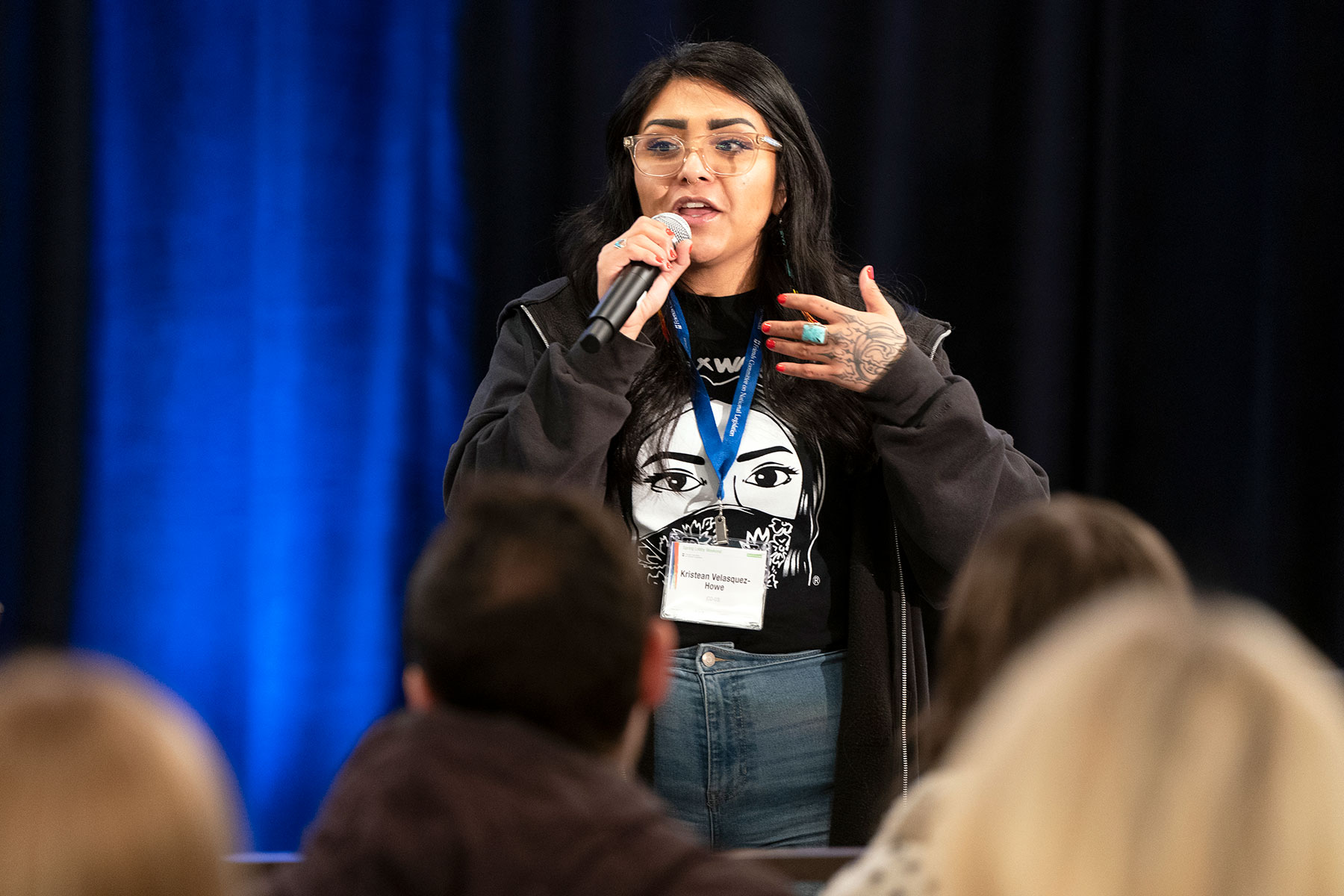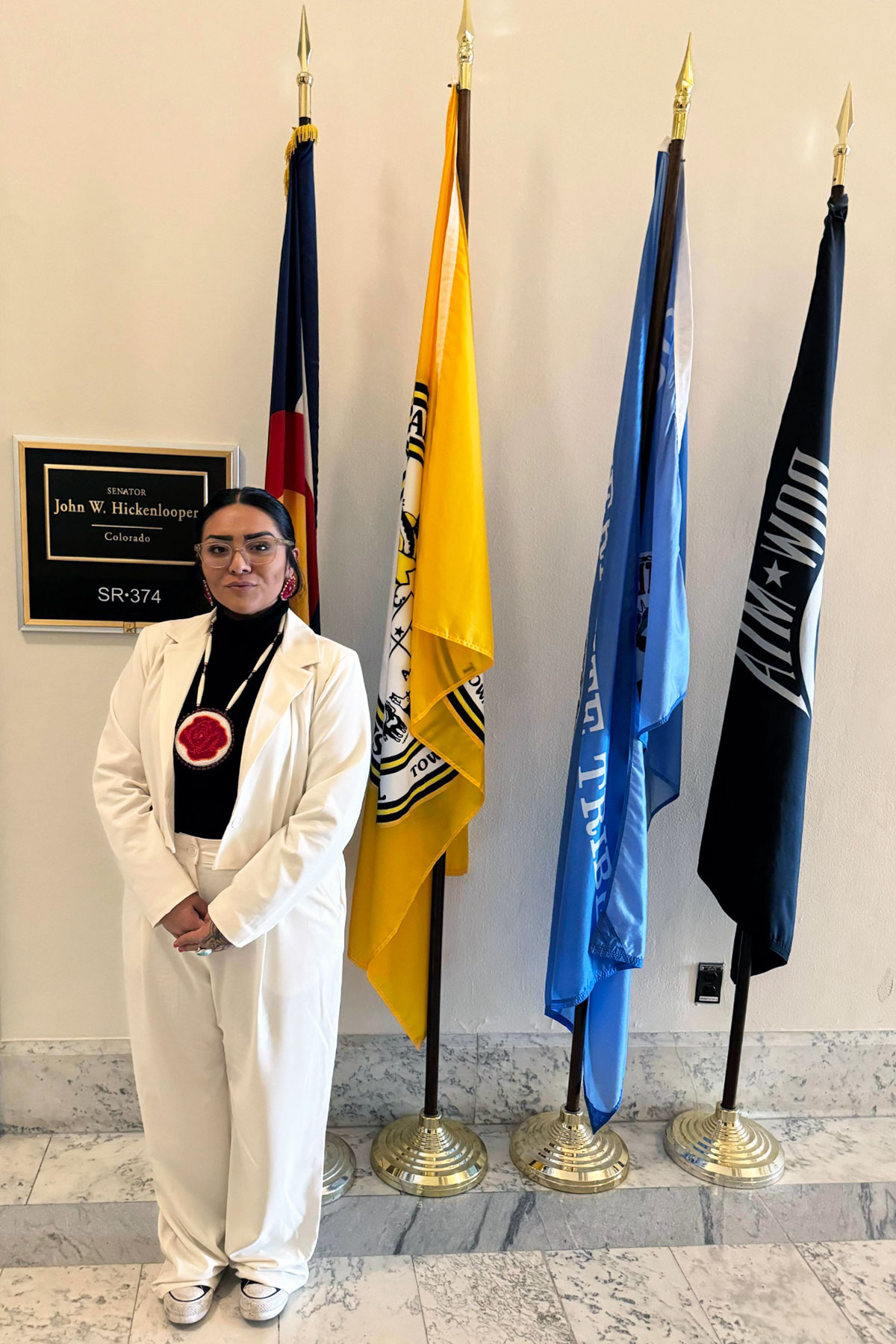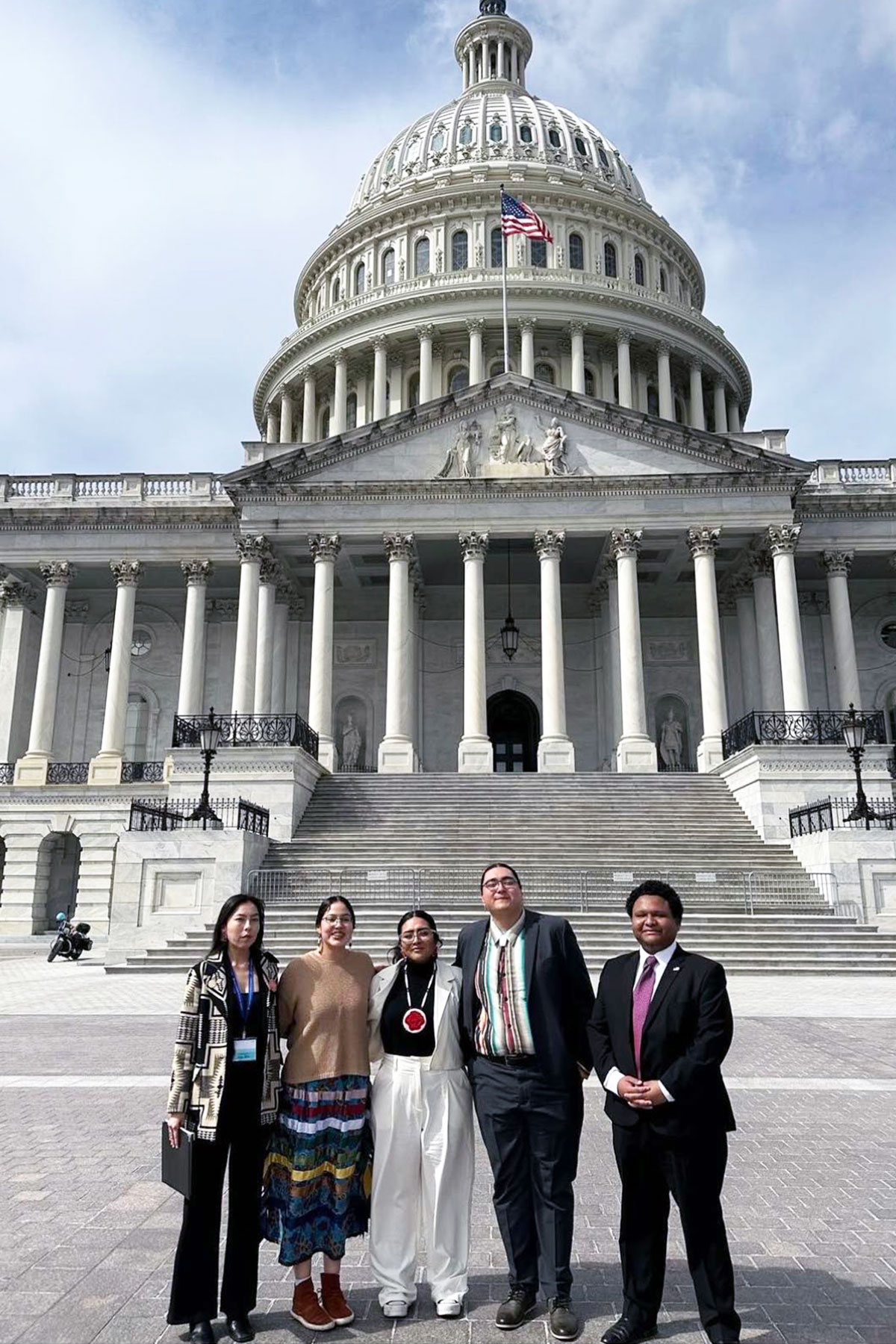Kristean Velasquez was one of 300 plus young advocates who were in attendance on Capitol Hill to lobby their members of Congress to support a Truth and Healing Commission on Indian Boarding Schools Policies.
Heather Shotton, vice president of Diversity Affairs at Fort Lewis College, invited four Fort Lewis students to Washington, D.C. for the Spring Lobby Weekend 2024 in March to lobby for the Truth and Healing Commission on Indian Boarding School Policies Act of 2024. The commission was sponsored by Rep. Sharice Davids (KS-03) and Rep. Tom Cole (OK-04) and endorsed by the National Native American Boarding School Coalition (NABS), and the National Congress of American Indians (NCAI).
Purpose of this lobby is to formally investigate, document, and report on the histories of Indian Boarding Schools and Policies and the long-term effects of those schools and policies on Native American peoples; develop recommendations for federal participation based on the Commission’s findings; and promote healing for survivors of Indian Boarding Schools, their descendants, and their communities.
Kristean Velasquez (Ute) from Ignacio, was joined by Fort Lewis College students, Brittany Bitsilly (Diné), Associated Students of Fort Lewis College (ASFLC) President; Destiny BigCrow (Diné/Oglala Lakota); Native American Youth Organization (NAYO) Sponsor; Matthew Schaeffer (Hopi), Political Engagement Project (PEP) President; and Dominick Damper (Diné).
Velasquez, a senior at Fort Lewis College in Durango, Colo. will be graduating in May with a major in Marketing and a minor in Native American & Indigenous Studies. Velasquez currently sits on the Southern Ute Indian Montessori Academy’s school board, and is a sponsor of Native Love, a non-profit whose mission is to “empower Native youth by providing culturally responsive programming.” Native Love seeks to preserve culture through providing services to indigenous people and indigenous youth by supporting culturally sustaining practices in the Four Corners region.
Native Love is heavily involved in the Missing and Murdered Indigenous Relatives (MMIR) movement, combating systemic issues that afflict Native American reservations and communities across Indian Country.
Velasquez is also an intern with Social Studies/Native American Studies teacher, Teresa Lewis at the Ignacio High School and is active in the Native American Youth Organization (NAYO) at the Ignacio High School, averaging 15-25 students who partake in the Native American organization.
Velasquez wants to help the youth of the community, “I want to spark that little fire, so the student can say ‘I can do that,’ so that the students stay curious.” Velasquez said. In NAYO, Velasquez stated they were currently working on organization titles, a mission statement, and hoping to debut an event in late April or early May.
“We need to instill leadership qualities in the students, validating their voices and opinions.” Velasquez said. Velasquez sights the Hendren brothers, Dewayne, Nate and Elliot as well as Leandra Litz for their leadership qualities they garnered from their time on the Sunshine Cloud Smith Youth Advisory Council (SCSYAC).
“I am curious … where’s our leadership from the adults? They are doing the minimum, they should be doing the maximum, the youth are our future,” Velasquez stressed. “The importance, as native people, we are community based as relatives, not just as parents, to hold each other accountable.”
Velasquez was invited to go to Washington, D.C., by Brittany Bitsilly of the Fort Lewis College Civic Engagement Collaborative. The Fort Lewis College Civic Engagement Collaborative is a group of students, faculty, staff, and community members dedicated to civic engagement and civil dialogue. The purpose of the student presence in D.C. was to lobby on behalf of the Truth and Healing Commission on Indian Boarding School Policies Act of 2024. The act is endorsed by the national Native American Boarding School Coalition (NABS), and the National Congress of American Indian (NCAI).
“I was not going to say no to this opportunity!” exclaimed Velasquez.
The Truth and Healing Commission on Indian Boarding School Policies Act of 2024 provided background on boarding schools, “Between 1819 through the 1970’s, in which the United States implemented policies establishing Indian boarding schools across the nation. The purpose of these boarding schools was to assimilate Native American, Alaska Natives, and Native Hawaiian children by forcibly removing them from their families, communities, and beliefs.”
A broader understanding of these historical traumas is only now coming to light, decades later. On Dec. 3, 2023, PBS aired a program on Indian Boarding Schools. “For decades, Native American children were taken from their homes and forced into boarding schools where they were also forced to give up their native language and culture,” read the description of Episode 13 of Season 13.
“My grandmother, [Alberta Thompson], went to the Southern Ute Boarding School. The faith based [religious] groups and the federal government pushed polices and politics to oppress Native communities.” Velasquez said.
The Truth and Healing Commission’s purpose is to “formally investigate, document, and report on the histories of Indian Boarding Schools, and policies, and the long-term effects of those schools and policies on Native American peoples; and to develop recommendations for federal participation based on the findings of the commission; and to promote healing for survivors of Indian Boarding Schools, the descendants of those survivors, and the communities of those survivors.”
The National Native American Indian Boarding School Healing Coalition (NABS) has identified six Indian boarding schools in Colorado. There are two federally recognized tribes in Colorado, the Southern Ute and Ute Mountain Ute Indian tribes.
Of the six-boarding schools, Fort Lewis Indian Boarding School (Fort Lewis College) from 1892-1956 in Hesperus, Colo; Southern Ute Boarding School (Ignacio Boarding School) from 1886-1981 in Ignacio, Colo; Ute Mountain Boarding School from 1907-1942 in Towaoc, Colo. are within reservation boundaries.
“Where are we at in these conversations?” asked Velasquez. “We need to inform our youth [in] our community of our boarding schools, including the Ignacio Boarding School.”
The boarding schools were run by various operators including, Catholics, Christians, Quaker and the U.S. Federal Government.
“We need to educate and to listen to the importance of the community, ‘what do you need?’ and hope within the community. I need to practice what I preach, to not only represent myself but our nation.”
The Truth and Healing Commission requires members of the commission to be selected by the majority leaders of the House and Senate, appointed with members of the Native American Truth and Healing Advisory Committee and the Native American Survivors Truth and Healing subcommittee and will consist of members from various federal agencies including, Indian Health Service, Bureau of Education, and archivists from the Library of Congress and the Department of the Interior.
“The commission will hold the federal government accountable and contribute to the healing of Native communities. Not one voice – but many! Power in numbers!” Velasquez emphasized.
When asked about her biggest take-away from her recent visit to D.C., Velasquez stated, “I’m here in D.C., I’m here as a representative of my tribe. We need innovation, to think differently. We are in a position to turn to the community, why do we not have a whole team of youth here? How do we bring these voices together?”






